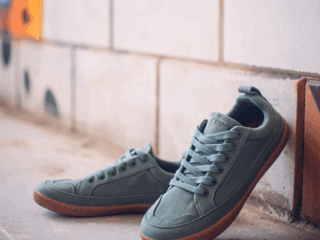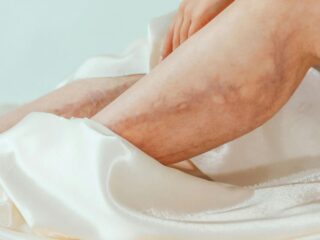
Finding footwear that balances comfort, style, and function can feel like a daily compromise. Traditional sneakers often force your feet into narrow boxes, elevated heels, and stiff soles that work against your natural gait. Over time, this can lead to tired feet, poor posture, and a disconnect from how your body was designed to move.
Enter barefoot sneakers—a category that prioritizes natural foot mechanics without sacrificing everyday style. Born from the idea that shoes should work with your body rather than reshape it, this approach to footwear has gained traction among urban professionals, fitness enthusiasts, and anyone tired of choosing between looking good and feeling good.
Understanding the Barefoot Philosophy
Barefoot sneakers follow three core principles:
Zero-drop construction means your heel and forefoot sit at the same height. Unlike traditional shoes with elevated heels that tilt your body forward, a flat base keeps your skeleton aligned and reduces stress on knees, hips, and lower back.
Wide toe boxes give your toes room to spread naturally. This isn’t just about comfort—splayed toes improve balance and help your foot absorb impact more efficiently. Most conventional sneakers taper at the front, cramming your toes together and limiting their functional role.
Flexible, thin soles allow your feet to feel and respond to different surfaces. This ground feedback strengthens small stabilizing muscles in your feet and ankles that often atrophy in heavily cushioned shoes.
Real-World Benefits Beyond the Gym
The appeal of barefoot sneakers extends far beyond athletic performance. Consider the office worker navigating ten thousand steps between meetings, subway platforms, and lunch spots. Or the creative professional spending hours on their feet—whether that’s a chef in a kitchen, a photographer at an event, or a musician during a long rehearsal.
One origin story in this space involves a guitarist with footwear industry experience who got tired of finishing sets with aching feet. Standard sneakers looked fine under stage lights, but turned encores into endurance tests. The solution came from designing shoes that prioritized natural movement and grounded comfort—footwear that disappeared from awareness instead of demanding attention.
This same principle applies whether you’re:
- Commuting through city streets for hours at a time
- Standing through work shifts that blur together
- Traveling light and needing versatile shoes for varied terrain
- Simply wanting footwear that doesn’t leave you exhausted by evening
Making the Transition
Switching to barefoot sneakers isn’t about discarding everything you own overnight. Your feet have adapted to cushioned, elevated shoes for years or decades. Rushing the change can lead to sore calves, tired arches, or overuse injuries.
Start gradually. Wear your barefoot sneakers for an hour at home, then extend the time as comfort allows. Alternate between old and new pairs during the first few weeks. Pay attention to how your feet feel during and after walks.
Expect an adjustment period. Your calves might feel tight. The soles of your feet might notice more texture and variation in surfaces. This is your body waking up dormant muscles and proprioceptive awareness. The discomfort typically fades within two to three weeks as your feet strengthen.
Consider different contexts. You might want slightly more cushioning for concrete commutes than for casual weekend wear. Some barefoot designs lean minimalist, while others offer a bit more protection—choose based on your typical environment.
What to Look For When Shopping

Not all barefoot sneakers deliver equally on their promises. Quality matters, and a few key features separate well-designed options from marketing hype.
Check the toe box shape. Place the shoe on the ground and look at it from above. Does it follow the natural outline of a human foot, or does it taper aggressively? Your toes need space to function.
Verify the drop. Some shoes claim to be “zero drop” but still have hidden elevation. Look at the technical specifications or measure yourself—the heel and forefoot should be level.
Test flexibility. Grab the shoe at both ends and try to twist it. A proper barefoot sole should bend and flex easily in multiple directions, mimicking how your foot naturally moves.
Feel the sole thickness. Run your fingers across the bottom. Thinner generally means more ground feel, which strengthens feet but takes more adaptation. Slightly thicker soles offer a middle path for beginners.
When exploring options in this category, collections like the Rutsu Barefoot Sneakers Collection represent the kind of thoughtful design that emerged from real-world frustration—created by someone who understood both footwear construction and the practical demands of long hours on your feet.
Style Without Sacrifice
One common hesitation about barefoot sneakers centers on aesthetics. Early minimal footwear often looked technical or overly athletic—fine for the trail, awkward for daily life.
Modern barefoot designs have evolved. Clean lines, neutral colors, and streamlined silhouettes mean these shoes work with jeans, chinos, or casual workplace attire. You’re not announcing your footwear philosophy to everyone you pass—you’re simply wearing comfortable sneakers that happen to respect your biomechanics.
This subtle approach matters for building consistency. Shoes you enjoy wearing get worn. Shoes that feel like a compromise sit in the closet.
The Long View
Barefoot sneakers aren’t a quick fix or a trendy gimmick. They represent a different relationship with footwear—one that trusts your body’s design and supports its natural capabilities rather than overriding them with cushioning, arch support, and structural control.
Over time, many people report:
- Reduced foot pain and fatigue
- Improved posture and gait
- Stronger feet and better balance
- Greater awareness of how they move
These changes don’t happen overnight. They build gradually as your feet remember how to function without constant intervention from your shoes. The process requires patience, but the payoff—footwear that genuinely enhances rather than constrains—makes the transition worthwhile.
Whether you’re clocking miles on city pavement, standing through long workdays, or just tired of shoes that hurt more than they help, exploring natural-movement footwear offers a practical alternative to the conventional compromise between style and comfort.












